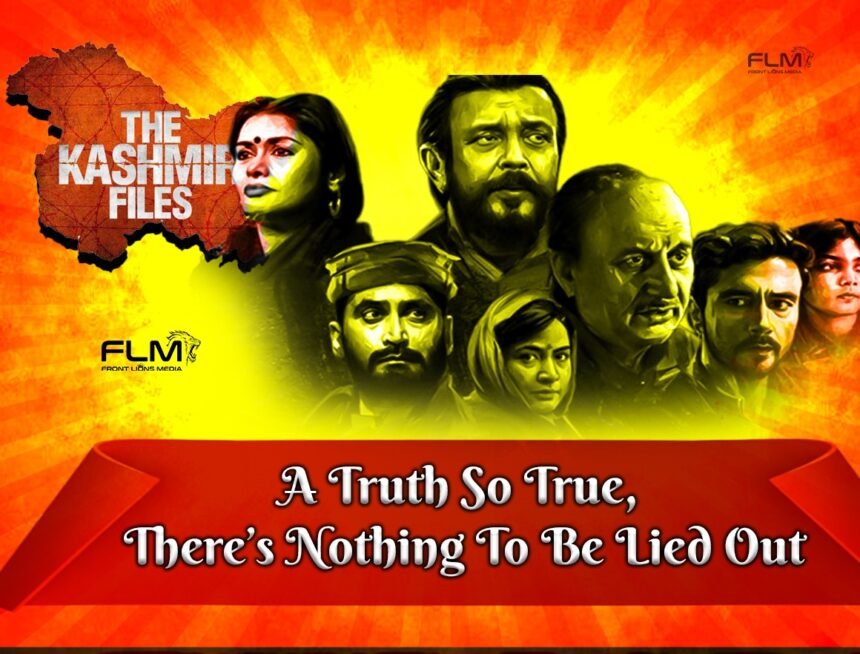The film, The Kashmir Files puts down blatantly the gut-wrenching story of the genocide of the Kashmiri Pandits in Jammu & Kashmir in 1990 that history has so far refused to record. The gunning down of entire families and silencing wailing babies with a bullet. It’s been related without exaggeration, there are searing eyewitness accounts of it and the film uses it as a closing shot.
What Vivek Rajan Agnihotri puts down blatantly, others didn’t even have the courage to put on their hands in the past 32 years. A delicate thread that most of us did not want to even think of breaking, it bluntly outs what we may or may not know about the exodus of the Kashmiri Pandits deserving a chance to tell us about the reality we do not know.
But before going to the “Expose” made by the film, let us have a glimpse about the “Kashmiri Pandits“.
THE KASHMIRI PANDITS
As far as history goes, the Kashmiri Pandits are a group of Kashmiri Hindus and a part of the larger Saraswat Brahmin community of India, belonging to the Pancha Gauda Brahmin group. The Hindu caste system of the Kashmir region was influenced by the influx of Buddhism from the time of Asoka, around the third century BCE, and a consequence of this was that the traditional lines of varna were blurred, except for that for the Brahmins. Another notable feature of early Kashmiri society was the relatively high regard in which women were held when compared to their position in other communities of the period.
The Kashmiri Pandits had been a favored section of the population of the valley during Dogra rule (1846–1947). 20 percent of them left the valley as a consequence of the 1950 land reforms,[26] and by 1981, the Pandit population amounted to 5 percent of the total. They began to leave in much greater numbers in the 1990s during the eruption of militancy, following persecution and threats by radical Islamists and militants. The events of 19 January 1990 were particularly vicious and brutal. On that day, mosques issued declarations that the Kashmiri Pandits were “Kafirs” and that the males had to leave Kashmir, convert to Islam, or be killed. Those who chose to be the first of these were told to leave their women behind. The Kashmiri Muslims were instructed to identify Pandit homes so they could be systematically targeted for conversion or killing.
THE FILM – The Kashmir Files
There is only one way of watching The Kashmir Files.
With pure passion-nothing else. It’s imperative that the world hears the gut-wrenching story of the genocide of 1990 that history has so far refused to record. Wherever they occur and whoever the victim, all genocides must be condemned as they have been in the past. But for reasons largely political, the murderous rant of ‘Ralive, Tsaliv ya Galiye’ (convert to Islam, flee or perish) that led to the mass massacre of Kashmiri Pandits and to their enforced exodus from their ancestral homes, has never been given center-stage by history or the arts.
32 years after the genocide and ‘ethnic cleansing’ that changed the demographics of Kashmir, Vivek Ranjan Agnihotri wades in with a mound of authentic research, lays bare the wounds, and films it all with the brutality it deserves. In the 1990s, when Article 370 prevailed, Kashmir enjoyed special status, most political dynasties had pro-Pak sympathies and supped with terror, the valley resounded with lusty slogans of ‘Azadi’ and abounded with graffiti of ‘Indian dogs go home’.
The gunning down of entire families and silencing wailing babies with a bullet. It’s been related without exaggeration, there are searing eyewitness accounts of it and the film uses it as a closing shot.
The rape and humiliation of women of all ages. It’s shown, in all its cruel rawness. Kayar ya akalmand? Cowardice or survival smarts? A Kashmiri Pandit, hiding in a barrel of rice until he’s ratted out by a neighbor. When a terrorist shoots enough holes in the barrel for blood to mix with the rice, the dead man’s wife has an option: eat a handful of the bloodied rice if you want to save the rest of your family. It’s not cinematic drama, it was a reality.
32 years later, the emotions & the pain remain the same. The brutally honest story of the Kashmir Genocide and finally someone had the guts to showcase the reality. What Kashmiri Pandits and Hindus suffered, none can bear it. `Secularism’ is the word used intestinally to whitewash the genocide of the Kashmiri Hindus. It is also heartbreaking that it took 32 years for a person like Agnihotri to gather the guts and say it loud.
The film is spreading awareness nationally and internationally about the truth like never before. This is our history. History of injustice, silence, discrimination, and bias by media and intellectuals. This film should be watched by every citizen of India to know how pseudo-secularism, appeasement politics catalyzed the Genocide of Kashmiri Pandits. This cinema should go to the Oscars, & be made tax-free across India as a few states have stood up with it and already taken the initiative.
Thanks for reading the article. Your comments are solicited. Please feel free to share the article.



Leave a Reply